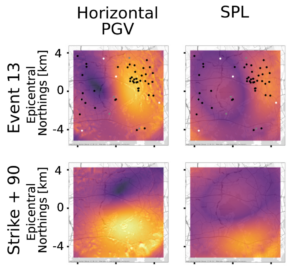Applicant
Prof. Dr. Michael Bader
Chair of Scientific Computing in Computer Science
Technische Universität München
Project Overview
“Induced seismicity” are earthquakes caused by human activities, such as by operating enhanced geothermal systems (EGS) for geothermal energy or oil/gas reservoirs or carbon capturing. Induced earthquakes are potentially hazardous as they typically happen in shallow depth and close to urban environments. While such events are mostly of small size, several exceptions (e.g., the 2017 M5.5 Pohang earthquake) have shown that induced earthquakes can also lead to substantial damage and economic loss. In addition, even smaller events can affect the acceptance by the general public by causing damage to buildings (even though mostly minor) or just by exciting irritating tremors or noises.
In this project, we extended the capabilities of the earthquake simulation software SeisSol (www.seissol.org) to model induced earthquakes, focusing on two general simulation scenarios:
simulating seismo-acoustic wave fields, specifically acoustic nuisance patterns caused by geothermal activities;
and
investigating earthquake mechanisms and ground shaking when taking into account poroelasticity of fluid-rich sediments.
The latter required implementation of dynamic rupture for poroelastic media, for which a complete redesign of SeisSol’s dynamic rupture routines was performed. This also enabled to port the dynamic rupture kernels to GPUs, and improved the general scalability of SeisSol on SuperMUC-NG. The redesign and optimisation of all dynamic rupture routines in C++ has been a major step to turn SeisSol into a pure-C++ code. After integration of the new dynamic rupture routines and successful scaling and performance evaluation, the landmark release of version 1.0.0 of SeisSol on March 24, 2023, included the ported dynamic rupture routines as one of the key additional features.
Our first simulation case focused on an experiment in 2018, which accompanied the stimulation of an enhanced geothermal system (EGS) in the Helsinki metropolitan area, Finland, when several small scale earthquakes have been triggered. While no large damage was reported, acoustic nuisance has been reported. We have applied the elastic-acoustic coupling feature of SeisSol for a joint simulation of earthquake and subsequent propagation of sound waves in the atmosphere. After the verification of the simulation in comparison to measured real-world data, we conducted a parameter study using different focal mechanism. The result was a nuisance map for adjoint neighbourhoods. Our workflow could be used for upcoming stimulations of EGS, in order to inform the public about expected nuisances.
In our second case, we studied the rupture dynamics in poroelastic materials and compared them to standard elastic models. Poroelastic materials play an important role in the study of geothermal systems, as the extraction of water changes the subsurface pressure distribution, which can lead to induced earthquakes. The pore pressure acts as a weakening mechanism at the fault, i.e. areas with a higher fluid pressure are less stable and more prone to breaking. This effect is particularly pronounced for branching faults. In certain cases, the elastic equivalent does not show the same rupture characteristics as the real poroelastic material. In the poroelastic case, the breaking of the branch releases additional energy and changes the wave field.


